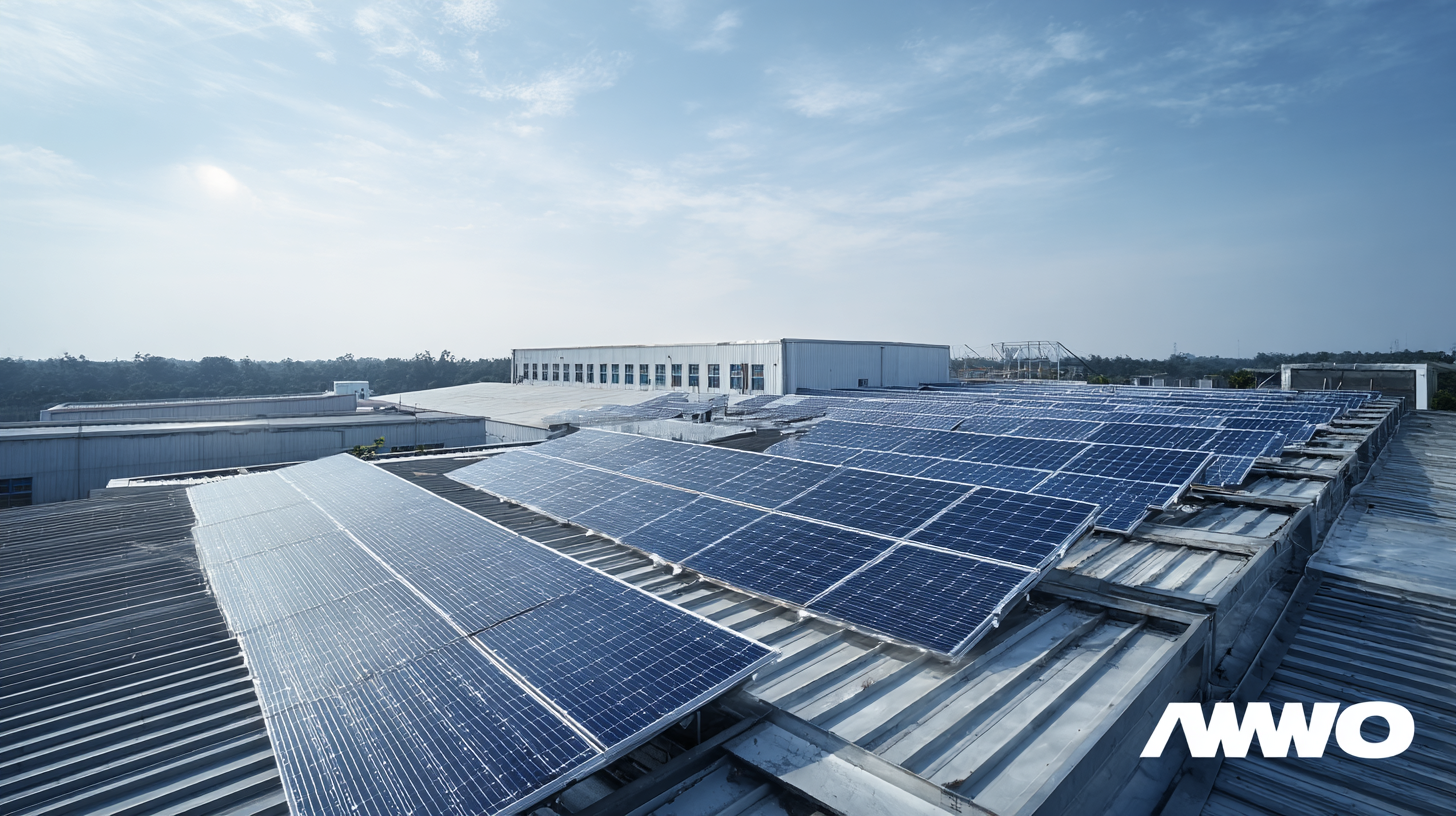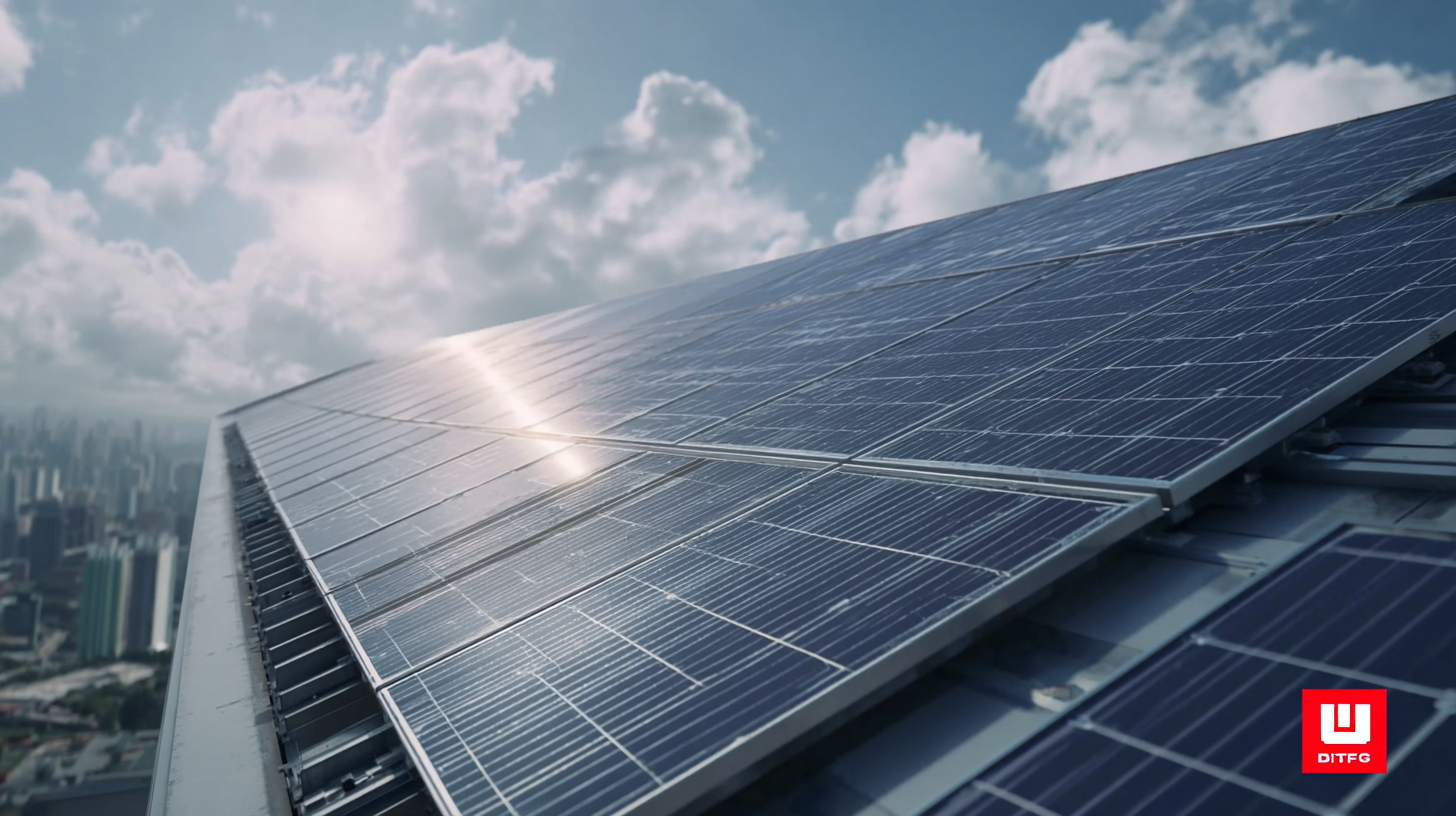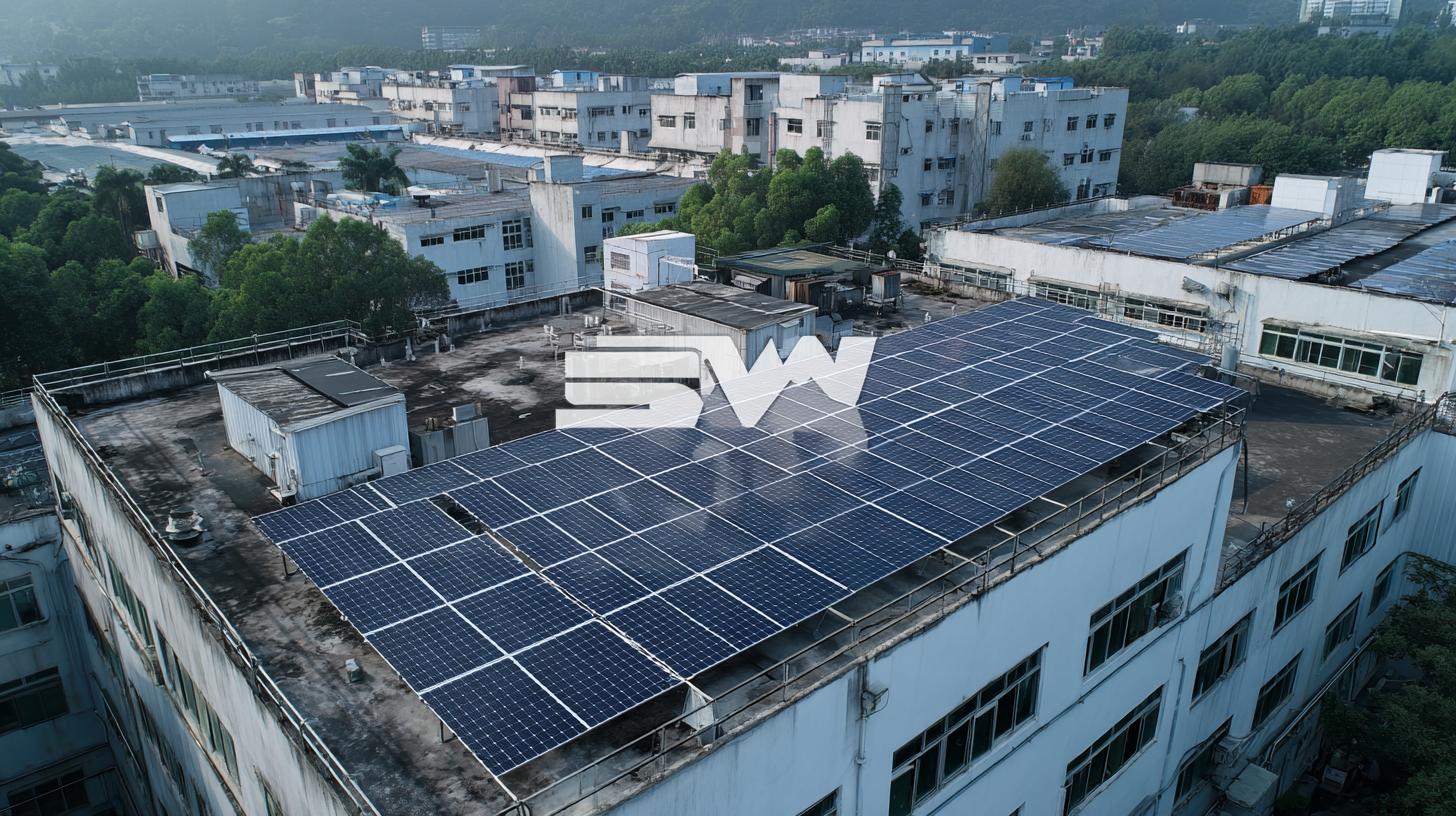As the global demand for renewable energy surges, rooftop solar panels have emerged as a critical solution for reducing carbon footprints and promoting sustainable living. In a recent report from the International Energy Agency (IEA), it is projected that solar energy could account for almost 25% of the world’s electricity generation by 2025, highlighting the rapid growth in this sector. With advancements in technology and rising efficiency ratings, China's leading factories are at the forefront of producing premium quality rooftop solar panels that cater to both residential and commercial markets. A study by Wood Mackenzie indicates that the efficiency of solar panels is expected to reach up to 30% for commercial applications within the next few years, showcasing the industry's commitment to innovation. This blog will explore the latest trends and developments in rooftop solar panel technology, emphasizing the unmatched quality and efficiency available from China's top manufacturers.

Efficiency ratings are crucial when selecting solar panels, as they directly impact both the performance and return on investment of solar energy systems. A higher efficiency rating means that more sunlight is converted into usable electricity, which is particularly important for residential and commercial installations where space may be limited. According to the National Renewable Energy Laboratory (NREL), the average efficiency of commercially available solar panels currently ranges between 15% to 22%. This variation underscores the significance of choosing panels with superior efficiency ratings, as even a slight increase can yield significantly more energy over the panel's lifespan.
Not only do efficiency ratings influence energy production, but they also factor into the overall cost-effectiveness of solar investments. For example, a study conducted by the Solar Energy Industries Association (SEIA) suggests that upgrading to higher-efficiency modules can reduce the number of panels required for a given energy output, thereby saving on installation and long-term maintenance costs. With advancements in technology, some premium-quality manufacturers are producing panels with efficiency ratings exceeding 24%, setting new benchmarks in the industry. Selecting panels from leading factories that prioritize efficiency ensures that consumers benefit from cutting-edge technology, translating into substantial energy savings and environmental benefits.
| Panel Model | Wattage | Efficiency Rating (%) | Temperature Coefficient (°C) | Warranty (Years) |
|---|---|---|---|---|
| Model A | 320W | 21.5 | -0.35 | 25 |
| Model B | 300W | 20.2 | -0.40 | 25 |
| Model C | 310W | 21.0 | -0.37 | 25 |
| Model D | 315W | 21.8 | -0.34 | 25 |
When searching for premium quality rooftop solar panels, several key features should be prioritized to ensure efficiency and longevity. One of the most critical factors is the panel's efficiency rating, which indicates how effectively it converts sunlight into electricity. According to the latest data from the National Renewable Energy Laboratory (NREL), high-efficiency panels can have ratings of 20% or higher, significantly outperforming standard models. This efficiency translates to more energy production from the same amount of sunlight, ensuring maximum return on investment for homeowners and businesses alike.

Another essential feature is the panel’s durability and warranty. Industry standards suggest that the best rooftop solar panels come with a minimum 25-year performance warranty, reflecting their ability to withstand harsh weather conditions and maintain efficiency over time. Recent studies show that high-quality solar panels retain over 80% of their efficiency even after 25 years, compared to lower-quality options that may degrade more rapidly. Buyers should also consider temperature coefficients, as the best panels will maintain stable performance even in extreme heat, commonly found in regions with high solar exposure.
In the competitive landscape of the solar panel industry, China's leading manufacturers have established themselves with a remarkable reputation for quality and efficiency. A comparative analysis reveals significant differences among these manufacturers regarding technological advancements and performance metrics. For instance, companies like Trina Solar and JinkoSolar consistently deliver products with industry-leading efficiency ratings, setting a benchmark for solar panel performance worldwide.
When considering rooftop solar panels for your home, it’s essential to evaluate not just the efficiency ratings but also the warranty and after-sales support offered by the manufacturers. Tips for making an informed choice include examining the panel’s energy output over its lifespan and understanding the degradation rate. Opt for brands that provide at least a 25-year warranty, reflecting confidence in their product's longevity. Additionally, reviewing user feedback can offer insights into real-world performance and reliability.
Another crucial aspect is the selection of the right type of solar panels for your specific needs. Monocrystalline panels, known for their high efficiency and sleek design, might be ideal for homes with limited roof space. Consider consulting with a local solar provider to ensure the selected panels align with your energy goals. By choosing wisely, you can harness the power of the sun effectively and sustainably.
Investing in high-efficiency solar solutions is increasingly becoming a sound financial decision as the global market continues to grow. By 2025, the market for CAE is expected to reach a valuation of $7072.3 million, demonstrating a robust compound annual growth rate (CAGR) of 7.9% projected up to 2033. This growth is reflective of the rising demand for sustainable energy sources, especially in the context of rooftop solar applications that benefit significantly from high-efficiency technologies.
In addition to the growth in the market, the solar packaging sector, analyzed by various material types and applications, reveals that solar panels constructed with superior materials such as EVA are particularly favored due to their durability and efficiency. With the global shift towards renewable energy, the investment in advanced solar solutions not only contributes to environmental sustainability but also promises considerable cost-effectiveness in the long run. As solar technologies evolve, consumers can expect enhanced performance and significant savings on energy bills, making the choice to adopt high-efficiency solar panels an economically sound strategy.

As rooftop solar panels continue to evolve, various innovations and technologies are shaping the future of this industry. The demand for higher efficiency ratings has led manufacturers to explore advanced materials and designs. For instance, the integration of bifacial solar cells allows panels to capture sunlight from both sides, optimizing energy generation. Furthermore, smart solar technologies that incorporate IoT features enable real-time monitoring and maintenance, ensuring optimal performance while reducing downtime.
In terms of market dynamics, the rooftop solar panel segment is witnessing significant growth. Projections indicate a compound annual growth rate of over 20% in off-grid solar photovoltaic systems from 2024 to 2032. This surge can be attributed to increasing concern over energy independence and sustainability. To leverage these trends, potential buyers should assess their energy needs carefully and consider technologies that provide the best return on investment while aligning with their environmental goals.
Tips for maximizing rooftop solar panels include ensuring proper installation to minimize shading and utilizing energy-efficient appliances to complement solar energy use. Regular maintenance checks can also increase the lifespan and effectiveness of solar installations. As the market continues to innovate, staying informed about the latest advancements can help consumers make educated decisions in their solar investments.
This chart displays the efficiency ratings of different rooftop solar panel models in 2023. As the demand for renewable energy sources grows, manufacturers are continuously innovating to improve the performance of solar panels.
As electricity costs continue rising, many small households in Maharashtra seek sustainabl...Read More
Uttar Pradesh is making significant progress in adopting renewable energy, particularly so...Read More
With the Indian government actively promoting renewable energy through subsidies and polic...Read More
Tired of watching your electricity bills climb month after month and strain your pockets? ...Read More
Switching to solar energy in Gujarat has never been more profitable! With plenty of sunlig...Read More
If you live in Madhya Pradesh and want to save money on power while living a greener lifes...Read More
If you’re a resident of Bangalore looking to save on your skyrocketing electricity b...Read More
If you live in Karnataka and have been looking for an environmentally friendly, cost-effec...Read More
Delhi is a city that thrives on its vibrant energy, and what better way to complement that...Read More
As electricity costs continue rising, many small households in Maharashtra seek ...Read More
Uttar Pradesh is making significant progress in adopting renewable energy, parti...Read More
With the Indian government actively promoting renewable energy through subsidies...Read More